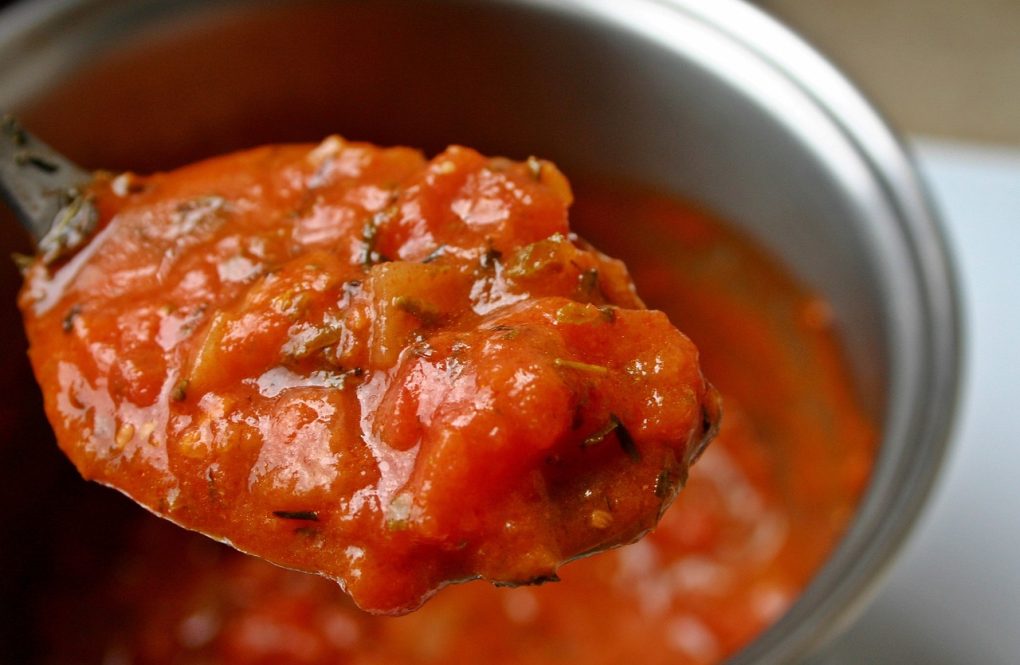
Are you looking for an answer to the question, “Can you freeze Alfredo sauce?” Before you decide to freeze your Alfredo sauce, it is important to know the answer to this question. This comprehensive guide will provide you with all the information you need to properly freeze, and store, your Alfredo sauce.
What is Alfredo Sauce?
Alfredo sauce is a creamy, white sauce typically made of butter, cream, and Parmesan cheese. It is often used to top pasta dishes such as fettuccine Alfredo, or other Italian dishes like lasagna and ravioli. It can also be used as a dip for breadsticks and other appetizers.
Can You Freeze Alfredo Sauce?
The short answer to this question is, yes, you can freeze Alfredo sauce. However, it is important to note that some of the ingredients in Alfredo sauce may not freeze well and may affect the texture and flavor of the sauce when it is thawed and reheated.
For example, cream and butter have a low freezing point, so when they are frozen and thawed, they become grainy and the flavor may be altered. Additionally, the texture of the sauce may also be affected by freezing; it may become grainy, watery, or lumpy.
Tips for Freezing Alfredo Sauce
If you decide to freeze your Alfredo sauce, there are several tips you can follow to ensure that it maintains its flavor and texture:
- Strain the sauce: Before freezing your Alfredo sauce, strain it through a fine-mesh sieve to remove any chunks of cheese, herbs, or other ingredients. This will help to preserve the smooth texture of the sauce.
- Portion the sauce: Freeze your Alfredo sauce in small portions, such as in ice cube trays. This will make it easier to thaw only the amount of sauce you need for a recipe.
- Add an emulsifier: To prevent the ingredients in the sauce from separating when frozen, add an emulsifier such as egg yolks or flour.
- Cool the sauce: Before freezing the sauce, make sure it is completely cooled to room temperature. If the sauce is still warm when it is frozen, it could cause the ingredients to separate.
How to Thaw Alfredo Sauce
When you are ready to use your frozen Alfredo sauce, it is important to thaw it properly to ensure that it retains its texture and flavor. The best way to thaw Alfredo sauce is to place it in the refrigerator overnight.
If you need to thaw the sauce quickly, you can place it in a bowl of cold water. Make sure to change the water every 30 minutes to ensure that it stays cold. Do not thaw the sauce in the microwave, as this can cause the ingredients to separate.
How to Reheat Alfredo Sauce
Once your Alfredo sauce is thawed, it is important to reheat it properly to ensure that it retains its texture and flavor. The best way to reheat Alfredo sauce is on the stovetop, over low heat. Stir the sauce frequently to prevent it from sticking to the bottom of the pot.
Do not reheat Alfredo sauce in the microwave, as this can cause the ingredients to separate. Additionally, be sure not to boil the sauce, as this can cause it to become watery.
How to Store Alfredo Sauce
If you have leftover Alfredo sauce that you do not plan to freeze, it is important to store it properly to prevent it from spoiling. The best way to store Alfredo sauce is in an airtight container in the refrigerator. The sauce will keep for up to three days.
If you want to store the sauce for longer, it is best to freeze it. See the previous section for tips on how to freeze Alfredo sauce.
How to Tell if Alfredo Sauce Has Spoiled
If you are unsure if your Alfredo sauce has spoiled, there are several signs you can look for:
- Smell: Fresh Alfredo sauce has a pleasant, creamy aroma. If the sauce smells sour or off, it has likely gone bad and should be discarded.
- Texture: Fresh Alfredo sauce should be smooth and creamy. If the sauce is lumpy or grainy, it has likely gone bad and should be discarded.
- Taste: Fresh Alfredo sauce should have a rich, creamy flavor. If the sauce is sour or off-tasting, it has likely gone bad and should be discarded.
Conclusion
In conclusion, you can freeze Alfredo sauce, although some of the ingredients may not freeze well and can affect the flavor and texture of the sauce.
If you decide to freeze your Alfredo sauce, be sure to strain it, portion it, add an emulsifier, and cool it before freezing.
When you are ready to use the sauce, thaw it in the refrigerator, and reheat it on the stovetop over low heat.
If you have leftover Alfredo sauce that you do not plan to freeze, store it in an airtight container in the refrigerator for up to three days.
If you are unsure if the sauce has gone bad, look for signs such as a sour smell, lumpy texture, or off-tasting flavor.
